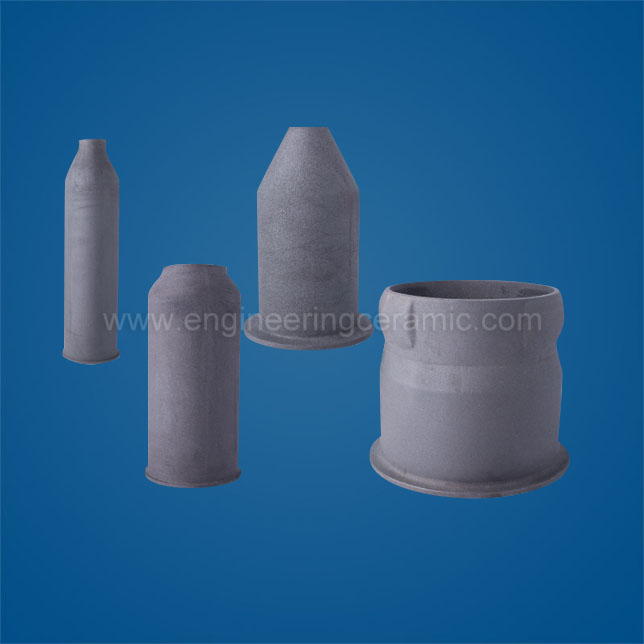Key aspects of silicon carbide ceramic
2023-10-18
Silicon carbide (SiC) ceramic is a high-performance material known for its exceptional mechanical, thermal, and electrical properties. It is a compound of silicon and carbon and is commonly used in various industrial applications that require excellent wear resistance, high-temperature stability, and superior electrical conductivity. Silicon carbide ceramics are used in environments where traditional materials might fail due to extreme conditions.
Here are key aspects of silicon carbide ceramic:
1. Hardness and Wear Resistance: Silicon carbide is one of the hardest materials known, making it highly resistant to wear and abrasion. It is used in applications where components are subjected to friction, erosion, and high mechanical stresses.
2. High-Temperature Stability: Silicon carbide retains its mechanical strength and hardness even at elevated temperatures. This property makes it suitable for use in high-temperature environments and applications such as furnace components, refractories, and gas turbine engine components.
3. Thermal Conductivity: Silicon carbide has excellent thermal conductivity, allowing it to efficiently dissipate heat. This property is valuable in applications where heat management is crucial.
4. Chemical Inertness: Silicon carbide is chemically inert and resistant to corrosion by most acids and alkalis. It is therefore used in aggressive chemical environments.
5. Electrical Conductivity: Silicon carbide ceramics can be engineered to have excellent electrical conductivity or to be semiconductive. This makes them suitable for applications in electronics, power devices, and sensors.
6. High Dielectric Strength: Silicon carbide has a high dielectric strength, making it useful for high-voltage electrical insulation applications.
7. Biocompatibility: Some forms of silicon carbide are biocompatible, making them suitable for certain medical and biomedical applications.
8. Structural Ceramics: Silicon carbide is used to manufacture structural ceramics, such as mechanical seals, bearings, and cutting tools.
9. Abrasive Applications: Silicon carbide is used as an abrasive material in grinding, polishing, and sanding applications.
10. Refractories: Silicon carbide is used in refractory materials that can withstand high temperatures and harsh environments in furnaces and kilns.
11. Coatings: Silicon carbide coatings are applied to surfaces to enhance wear resistance, thermal stability, and corrosion resistance.
12. Advanced Electronics: Silicon carbide is gaining attention in the electronics industry for its potential in high-power, high-frequency electronic devices and power semiconductor applications.
13. Ceramic Matrix Composites: Silicon carbide is used as a reinforcement material in ceramic matrix composites, enhancing the mechanical properties of the composite material.
14. Production Methods: Silicon carbide ceramics can be produced using various methods, including powder processing, sintering, and chemical vapor deposition.
Due to its unique combination of properties, silicon carbide ceramic is used in diverse industries, from aerospace and defense to automotive, electronics, and industrial manufacturing. Its versatility and exceptional performance characteristics contribute to advancements in various technological applications.



